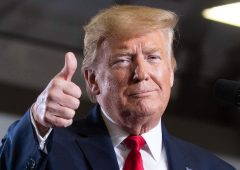Binance Integrates Babylon to Unlock New Bitcoin Staking Potential
12.04.2025 9:00 1 min. read Alexander Stefanov
A major breakthrough in Bitcoin staking is gaining momentum after Binance announced its latest addition: Babylon (BABY), a project aiming to unlock new utility for BTC without relying on traditional bridges.
The platform has added Babylon to its expanding lineup of supported crypto assets. The announcement coincided with the launch of Babylon Genesis, a key milestone for the project, and sparked a brief rally in BABY’s price.
Within hours on the 11th of April, the token surged from $0.084 to nearly $0.10 before pulling back to $0.087 — still marking a notable 24-hour gain.
Babylon’s core proposition lies in bringing staking functionality to Bitcoin holders — something that’s long been considered a challenge due to the network’s architectural limitations.
The protocol introduces a system that offers staking-based security to proof-of-stake (PoS) chains without the need to move BTC across bridges, sidestepping common bottlenecks around speed, programmability, and capital security.
The team behind Babylon argues that past attempts to scale Bitcoin or integrate it into PoS ecosystems have faced hurdles due to fragile or capacity-limited bridging mechanisms. Instead, their solution leverages BTC’s existing structure to secure PoS chains directly, offering a new path forward without compromising on decentralization or liquidity.
As Bitcoin continues to dominate in market value but lag behind in advanced functionality, Babylon’s approach is being watched closely as a potential inflection point in broadening BTC’s role in the wider crypto landscape.
-
1
Why Gold Could Be the Smart Play Amidst US Debt Surge
11.06.2025 11:00 1 min. read -
2
Warren Buffett Narrows His Bets as He Prepares to Step Down
14.06.2025 16:00 2 min. read -
3
MEXC Sets Up $100M Emergency Fund to Protect Users From Major Security Incidents
12.06.2025 11:00 1 min. read -
4
NFTs Quietly Evolve Into Core Digital Infrastructure
13.06.2025 17:00 2 min. read -
5
Binance Enters Syrian Market as Sanctions Ease
12.06.2025 22:00 1 min. read
Key U.S. Events to Watch This Week That Could Impact Crypto
The first week of July brings several important developments in the United States that could influence both traditional markets and the cryptocurrency sector.
Here Is How Your Crypto Portfolio Should Look Like According to Investment Manager
Ric Edelman, one of the most influential voices in personal finance, has radically revised his stance on crypto allocation. After years of cautious optimism, he now believes that digital assets deserve a far larger share in investment portfolios than ever before.
GENIUS Act Could Reshape Legal Battle over TerraUSD and LUNA Tokens
In the case involving Terraform Labs and its co-founder Do Hyeong Kwon, the defense has asked the Federal Court for the Southern District of New York to extend the deadline for pretrial filings by two weeks, pushing it beyond the original date of July 1, 2025.
Coinbase Surges 43% in June, Tops S&P 500 After Regulatory Wins and Partnerships
Coinbase has emerged as the best-performing stock in the S&P 500 for June, climbing 43% amid a surge of bullish momentum driven by regulatory clarity, product innovation, and deeper institutional interest in crypto.
-
1
Why Gold Could Be the Smart Play Amidst US Debt Surge
11.06.2025 11:00 1 min. read -
2
Warren Buffett Narrows His Bets as He Prepares to Step Down
14.06.2025 16:00 2 min. read -
3
MEXC Sets Up $100M Emergency Fund to Protect Users From Major Security Incidents
12.06.2025 11:00 1 min. read -
4
NFTs Quietly Evolve Into Core Digital Infrastructure
13.06.2025 17:00 2 min. read -
5
Binance Enters Syrian Market as Sanctions Ease
12.06.2025 22:00 1 min. read


